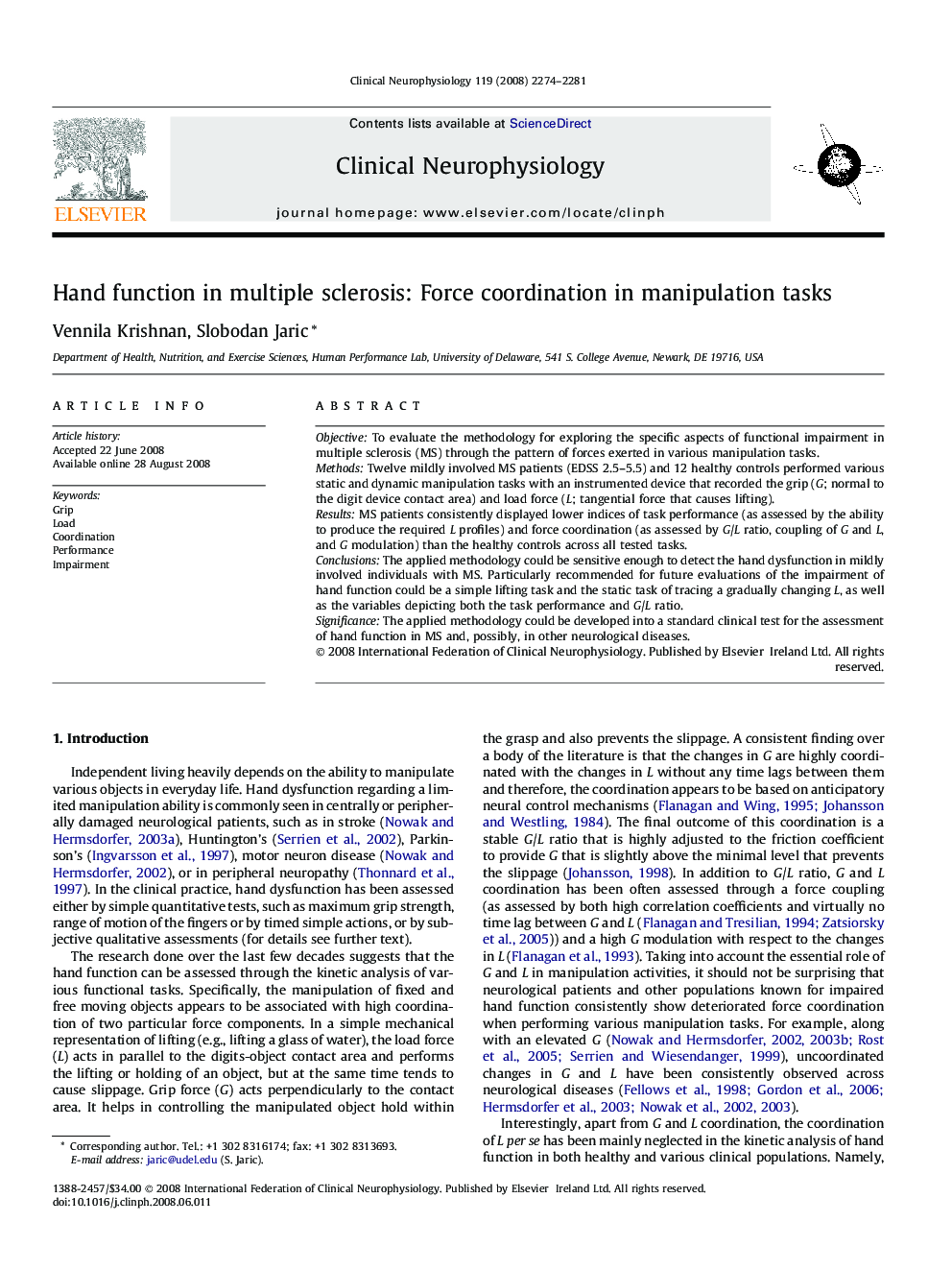| Article ID | Journal | Published Year | Pages | File Type |
|---|---|---|---|---|
| 3046462 | Clinical Neurophysiology | 2008 | 8 Pages |
ObjectiveTo evaluate the methodology for exploring the specific aspects of functional impairment in multiple sclerosis (MS) through the pattern of forces exerted in various manipulation tasks.MethodsTwelve mildly involved MS patients (EDSS 2.5–5.5) and 12 healthy controls performed various static and dynamic manipulation tasks with an instrumented device that recorded the grip (G; normal to the digit device contact area) and load force (L; tangential force that causes lifting).ResultsMS patients consistently displayed lower indices of task performance (as assessed by the ability to produce the required L profiles) and force coordination (as assessed by G/L ratio, coupling of G and L, and G modulation) than the healthy controls across all tested tasks.ConclusionsThe applied methodology could be sensitive enough to detect the hand dysfunction in mildly involved individuals with MS. Particularly recommended for future evaluations of the impairment of hand function could be a simple lifting task and the static task of tracing a gradually changing L, as well as the variables depicting both the task performance and G/L ratio.SignificanceThe applied methodology could be developed into a standard clinical test for the assessment of hand function in MS and, possibly, in other neurological diseases.
